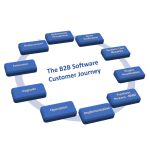Using the Business Model Environment for Export Market Assessments – Part 3
In this series of posts I provide a simple approach for making a fast yet fairly comprehensive assessment of a foreign market (that you have short-listed among the many opportunities available to you). This assessment will indicate which adjustments you need to make to your business model and to your go-to-market approach to become successful in that market (country).
Adjusting the business model for a foreign market
Identifying significant differences in the business model environment will call for adjustments, or even changes, to your business model compared to how you operate it in your domestic market.
These changes can best be defined by reviewing each element of the business model separately.
Value proposition and market segments
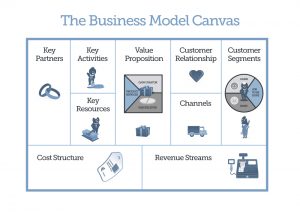 Our value proposition and the target market segments you decide to approach are very closely related. As customer requirements and the competitive situation may be different from country to country you often have to make adjustments here.
Our value proposition and the target market segments you decide to approach are very closely related. As customer requirements and the competitive situation may be different from country to country you often have to make adjustments here.
You can ask if the differences in the business model environment:
- Will require any adjustments to your value propositions?
- Will require any adjustments to your target market segments?
Channels
The channels are employed to find, nurture, mature, activate, develop and win happy customers.
You can ask if the differences in the business model environment:
- Will require any adjustments to how you facilitate the customer’s buying journey?
Customer relationships
Your customer relationships are designed to make, keep and grow happy customers.
You can ask if the differences in the business model environment:
- Will require any adjustments to how you make, keep and grow happy customers?
Revenue
The revenue is a function of your ability to facilitate the customers’ buying journey and the prices you can charge.
You can ask if the differences in the business model environment:
- Will dictate differences in the prices you can charge?
- Will impact how you charge or invoice customers?
- Will impact debtor days and payment collection?
Key activities
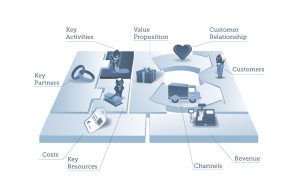 Running the business model front office, including defining and making changes to the products and services behind the value propositions, adjusting the target market segments, refining the process to find, nurture, mature, activate, develop, win, make, keep and grow happy customers and finding the right pricing level may require different and additional activities.
Running the business model front office, including defining and making changes to the products and services behind the value propositions, adjusting the target market segments, refining the process to find, nurture, mature, activate, develop, win, make, keep and grow happy customers and finding the right pricing level may require different and additional activities.
Managing staff or business partners in other locations, speaking different languages and understanding different cultures will certainly add a layer of complexity that you need to master.
You can ask if the differences in the business model environment:
- Will call for new activities to be undertaken?
- What are these activities?
- Which of these activities can be undertaken at headquarter level and which must be undertaken in each region or country?
Key resources
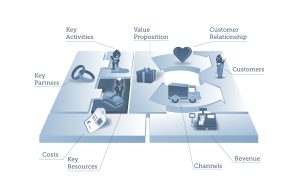 Running activities requires employing and engaging resources. In the discussion so far we have stressed that becoming successful in a new country may (most likely will) require tweaking everything in your front office. You not only perform more activities, but also different activities, which again implies that you not only need additional resources, but also new types of resources.
Running activities requires employing and engaging resources. In the discussion so far we have stressed that becoming successful in a new country may (most likely will) require tweaking everything in your front office. You not only perform more activities, but also different activities, which again implies that you not only need additional resources, but also new types of resources.
You can ask if the differences in the business model environment:
- Will require additional resources and if so which and how much?
- How will you recruit these resources?
- How will you on-board these resources?
- How will you organize these resources?
- How will you manage and measure the performance of these resources?
- Which resources do you need at the HQ level and which do you need at the country or regional level?
Key partnerships
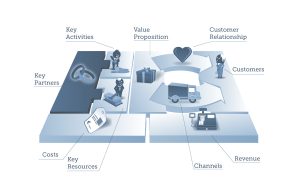 Key partners are suppliers and strategic alliances that form a critical part of your value proposition. If they fail to deliver, then you cannot deliver. Information technology and especially software and services companies traditionally have few or no key partnerships[1]. It is unlikely that moving into a new country will inflict any changes to this scenario.
Key partners are suppliers and strategic alliances that form a critical part of your value proposition. If they fail to deliver, then you cannot deliver. Information technology and especially software and services companies traditionally have few or no key partnerships[1]. It is unlikely that moving into a new country will inflict any changes to this scenario.
You can ask if the differences in the business model environment:
- Have any impact on your key partnerships?
- If new key partnerships in the country could improve your value proposition and competitive position?
Cost
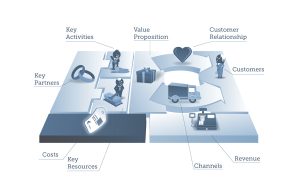 Entering foreign markets require investments and recurring operational costs. Knowing how fast you can win the first light house customers and form a bridgehead from where you can scale the business is extremely hard to predict. Not even big companies that set up their own operations, hire their own staff and invest massively in building market awareness can predict if and how soon they will reach break-even.
Entering foreign markets require investments and recurring operational costs. Knowing how fast you can win the first light house customers and form a bridgehead from where you can scale the business is extremely hard to predict. Not even big companies that set up their own operations, hire their own staff and invest massively in building market awareness can predict if and how soon they will reach break-even.
As planning is cheap and execution is expensive it makes good sense to run a number of planning sessions and gather market intelligence before committing resources to engage with partners and customers to whom you will have obligations if you fail to establish a sustainable business in that country.
[1] Customers, distributors and resellers are not your key partners. Key partners are found in the input side of your supply chain and are suppliers and alliance partners. Suppliers that can easily be replaced are not key partners. You can normally identify a key partner by the fact that you will arrange a second source option to mitigate the risk of failure.Download this series of posts as a whitepaper.






